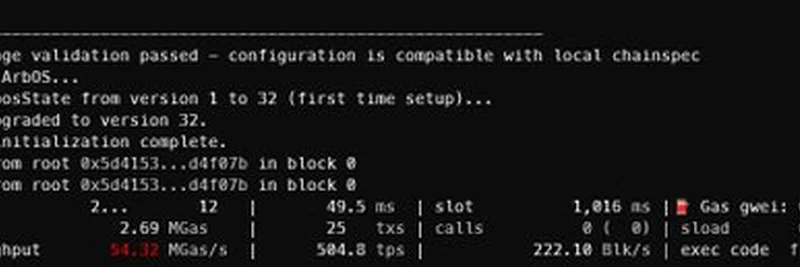Hey there, crypto enthusiasts! If you’ve been keeping an eye on the latest blockchain developments, you’ve probably heard about Arbitrum, a popular Layer 2 scaling solution for Ethereum. Recently, the team at Nethermind dropped an exciting update on X that’s got the community buzzing. They’ve successfully processed the first blocks using their execution client on a full Arbitrum local chain simulation. Let’s break it down and see what this means for the future of blockchain tech!
What’s Happening with Nethermind and Arbitrum?
Nethermind, known for building high-performance execution clients, has partnered with Arbitrum to bring more diversity and efficiency to its ecosystem. An execution client is like the engine of a blockchain—it takes transactions, runs them through the Ethereum Virtual Machine (EVM), and updates the blockchain ledger. By integrating their client into a local chain simulation, Nethermind is testing the waters for some big upgrades.
The simulation uses a modified version of nitro-testnode, a tool that sets up a complete local environment for testing Arbitrum contracts. This setup includes a fresh local chain where Nethermind’s client can process blocks. Think of it as a sandbox where developers can experiment without risking real money or disrupting the main network.
The image above shows the terminal output from this process, with details like block throughput (54.32 MGas/s) and transaction processing speed (504.8 TPS). These numbers hint at the potential for faster, more efficient blockchain operations—music to the ears of anyone building on Arbitrum!
Why This Matters
This milestone is a big deal for a few reasons. First, it adds client diversity to Arbitrum. Right now, the ecosystem relies heavily on Nitro, which is based on go-ethereum (Geth). By bringing in Nethermind’s client, alongside another team called Erigon, Arbitrum gets more options. Different clients can offer unique strengths, like better performance or specific optimizations, much like how different web browsers enhance your internet experience.
Second, this local simulation is a foundation for testing new features. Nethermind is already working on web assembly execution and adding support for Stylus, a tool that could make smart contract development even smoother. This kind of experimentation is crucial for scaling blockchain networks to handle more users and apps.
What’s Next?
The team isn’t stopping here. Their next goal is to sync their client with the Sepolia testnet, a popular testing ground for Ethereum developers. Syncing with Sepolia will let them test their client in a live-like environment with other nodes, ensuring it’s ready for the real world. If successful, this could pave the way for broader adoption of Nethermind’s client across the Arbitrum network.
The Bigger Picture for Meme Token Fans
Even if you’re more into meme tokens than technical blockchain upgrades, this news is worth a nod. A stronger, more diverse Arbitrum ecosystem could mean better infrastructure for meme token projects built on it. Faster transactions and lower costs could help meme coins gain traction, especially if developers use tools like Stylus to create fun, innovative contracts. So, while this might seem like a geeky dev update, it could indirectly boost the meme token scene we love at Meme Insider!
Final Thoughts
Nethermind’s work with Arbitrum is a exciting step toward a more robust blockchain future. By testing their execution client on a local chain and planning for Sepolia sync, they’re laying the groundwork for performance boosts and new features. Whether you’re a blockchain pro or just here for the meme coin vibes, this is a development worth watching. Stay tuned for more updates, and let us know your thoughts in the comments!




